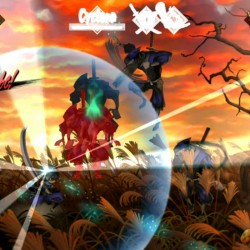

“It’s kind of like old people who have a story to tell but, if nobody’s willing to listen, nobody knows the story.”Ĭlosures can happen when denominations get too small, when neighborhood demographics shift, or if newer facilities become available in the vicinity. “There usually isn’t anybody left that has a connection to the history,” said Nielson, once churches close. Speaking generally about small churches, he described their founding boards as “the caretakers of the local story of that church,” and said it’s not uncommon for that history to be lost overtime, particularly as churches close. It’s like the mom-and-pop stores that are disappearing as the neighborhood and culture changes.” They think their children will go, but often the children move away. These little churches were built with enthusiasm and a very, very local connection. You can look at the time capsule and realize the whole story of how that little teeny church got started.

“The church was a big social connection in those days. “It’s a story about a particular time that doesn’t exist anymore, how people lived in neighborhoods,” he continued. Several of his tracts were included in the time capsule: “What the Bible says about Social Drinking” and “Liquor at the Bar of Judgment.” Nielson said the second item appeared to be an informational campaign flyer for a vote on temperance that was held in California in 1948, noting, “which I guess didn’t pass. Paul’s, Frank Shunk Downs, had been president of the California Temperance League, as well as a local preacher. Those two denominations had split over slavery during the Civil War and didn’t reunite for 120 years, he added. That’s “also why it eventually dwindled,” said Nielson, due to “too many churches of the same denomination in Berkeley.”

In 1958, the denomination merged with the larger United Presbyterian Church in the United States of America, which already had three churches in Berkeley at the time. It was, apparently, the only church in Berkeley of that particular denomination, “which explains why they founded it,” he said. Paul’s Church was initially founded in a denomination called the United Presbyterian Church of North America. Schrader says he will consider all suggestions.Īccording to Nielson, St.

Have ideas for what to include in the new time capsule? Share them in the comments section below. Schrader has plans to put the box, with modern contents, back into the new Durant apartment building behind its original cornerstone from the church. Paul’s Church, at 2024 Durant Ave., where the time capsule was discovered by construction workers last week. Schrader is constructing a new apartment building on the site of St. Pastor Leonard Nielson, of the Presbytery of San Francisco - which is based in Berkeley, oversees about 77 Bay Area churches, and was the former property owner of the church - opened the time capsule Monday after it was given to him by developer William Schrader Jr. Several pro-temperance fliers written by the pastor, seemingly in support of an election coming up around the time of the church’s construction, were also among the contents. Photo: Leonard Nielson/Presbytery of San FranciscoĪ time capsule discovered last week during the demolition of a Berkeley community church included a carefully wrapped 1875 family bible from one of the church’s founding members, newspaper articles about the church groundbreaking in 1948, and several other related records, such as a church history and roster, published sermons related to the founding pastor, and an architectural flier about the building. A bible from the 1800s and anti-liquor pamphlets were among the contents of a time capsule found in Berkeley last week.


 0 kommentar(er)
0 kommentar(er)
